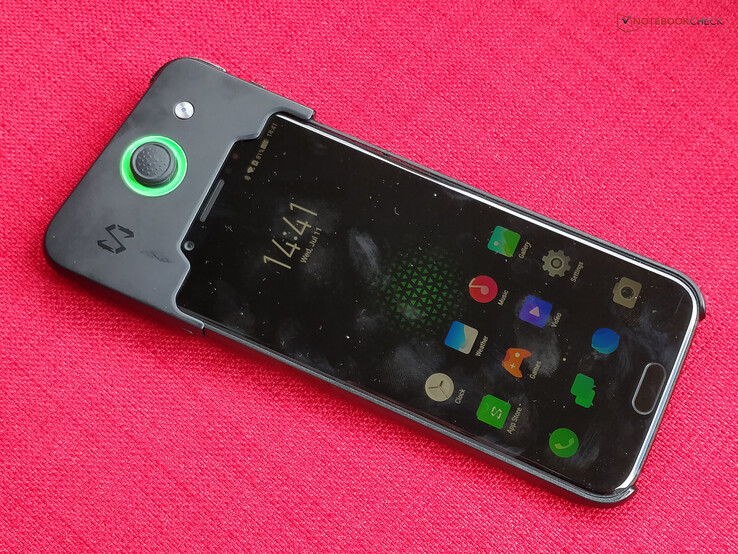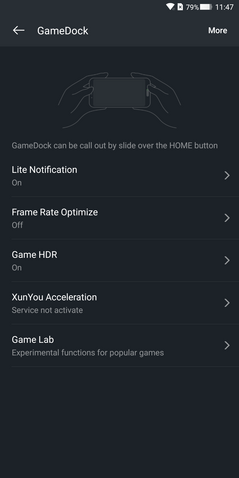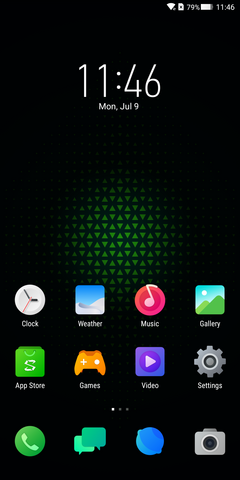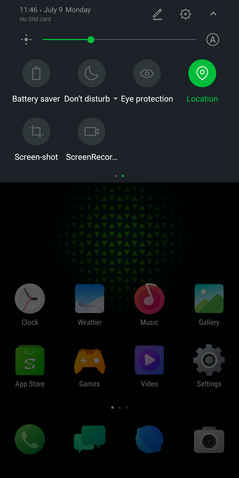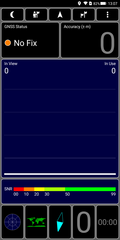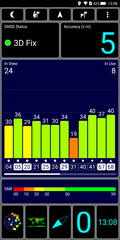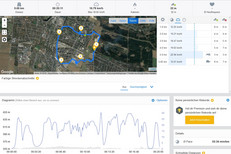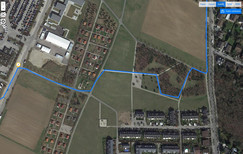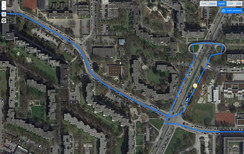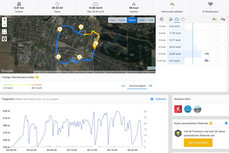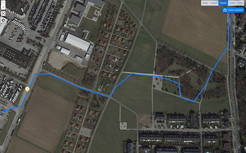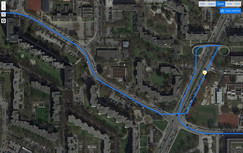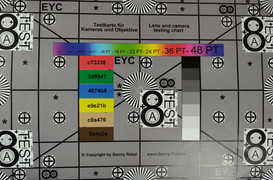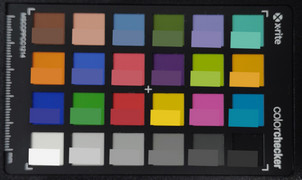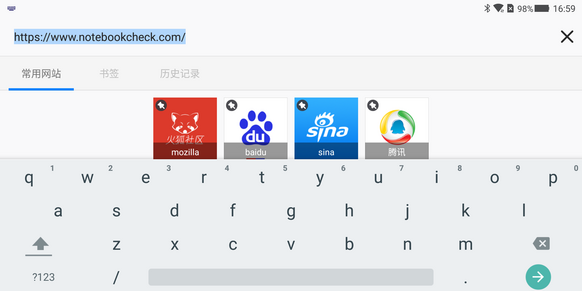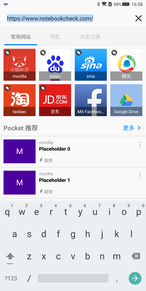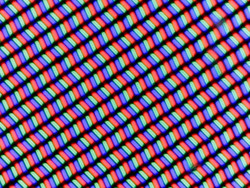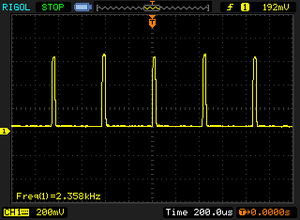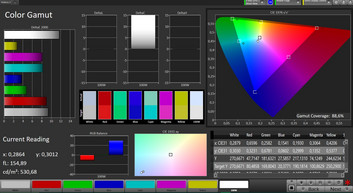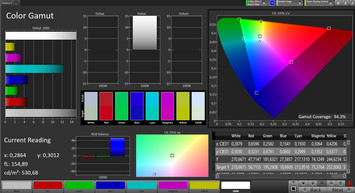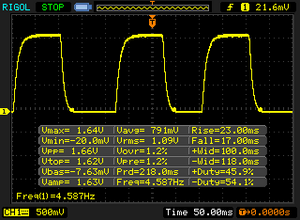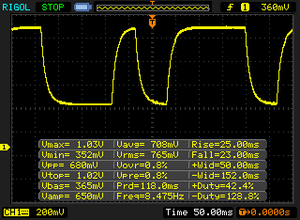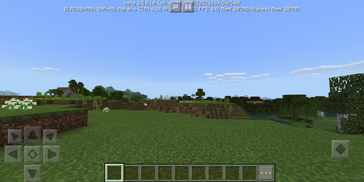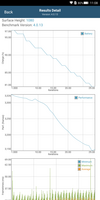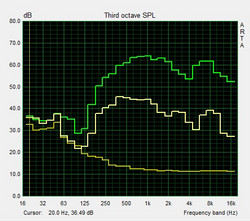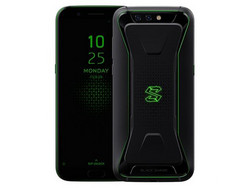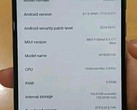Xiaomi Black Shark Smartphone Review
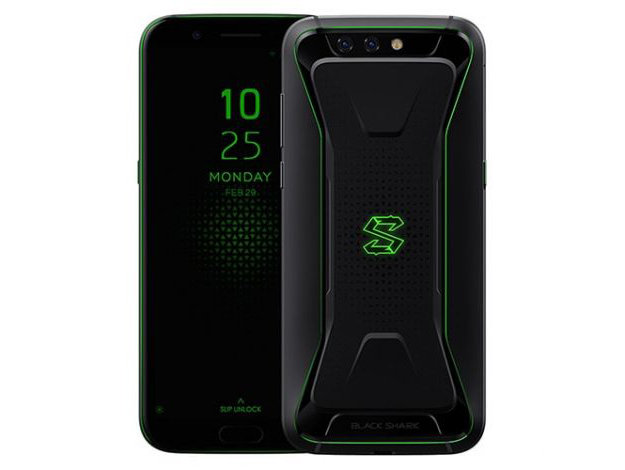
In a time where everyone already has a smartphone, manufacturers have to come up with new ideas to appeal to new target audiences. So manufacturers fall back to a group of customers that is usually willing to spend larger amounts of money for a good "rig" while also appreciating unusual design concepts: gamers. We already reviewed the Razer Phone 2017 – the Xiaomi Black Shark was at least as highly anticipated as the Razer Phone, if not more, and now it has freshly arrived in our test lab.
Several optimizations are meant to turn the Black Shark into any gamer's dream: First, a special menu with a button that enables the user to open installed games extremely fast. Then, the phone also comes with a gamepad as an optional accessory, and with a water-cooled Snapdragon 845 for an exceptionally high performance.
However, Xiaomi's gaming phone has a drawback: In contrast to Xiaomi's other smartphones, this one is not officially available in Europe yet. It can be ordered via import shops though, such as tradingshenzhen.com, who thankfully provided us with this test device. In addition, users have to deal with menus that are only partly translated into English, the lack of LTE band 20, a limited Android without Google services, and a Chinese power supply. To compensate for the latter, an EU adapter is included by some retailers. These drawbacks are balanced out by a relatively low price: Depending on the chosen hardware options, prices start as low as 419 Euros (~$487), which is extremely low for a high-end smartphone.
Other than the aforementioned Razer Phone 2017, we also compare our test device to current high-end smartphones, such as the Samsung Galaxy S9+, the OnePlus 6, and the Honor 10.
Case - Premium Gaming Outfit
In opposite to the angular, but overall understated design of the Razer Phone 2017, the Xiaomi Black Shark gaming phone is more eccentric: The black case is framed by a metallic green stripe. The button on the phone's left side has a green edging as well and additional green accents can be found on the phone's rear, together with a green logo in the center. The case is made of metal, but the rear's central area is plastic. According to Xiaomi, the reason for this is the better grip on a surface made of plastic instead of metal. The Black Shark is available in black and gray, but we could only find the black variant online, which is also the one we are reviewing here.
The display bezels are very narrow at the sides, with top and bottom bezels that are not too broad either. The fingerprint sensor has been placed below the screen. The case is highly resistant against pressure and cannot be warped. Despite the elaborate cooling mechanism, the Black Shark has a weight of only 190 grams, which makes it slightly lighter than the Razer Phone 2017. Thanks to its rounded corners, it rests comfortably in the hand. By the way, the logo on the rear is backlit by LEDs and can be set to flash for incoming calls or certain notifications.
Features - Xiaomi Black Shark without MicroSD
Our test device is the least expensive variant of the Black Shark and comes with 6 GB of RAM and 64 GB of storage at a current price of about 419 Euros (~$487) on the Internet. Users willing to pay an additional 40 Euros (~$46) instead receive 8 GB of RAM and 128 GB of storage. A variant with 256 GB of storage supposedly exists as well, but it is not yet available for purchase. Either way, each variant is on a par with current high-end smartphones, but the Razer Phone always comes with 8 GB of RAM, giving it a slight advantage here. The Xiaomi Black Shark is a dual-SIM phone, but a storage expansion via microSD card is not possible.
Software - The Xiaomi Black Shark Only Has English Software
Xiaomi created a new interface named JoyUI especially for its Black Shark series. It is based on MIUI, which is used for other Xiaomi smartphones, but it has a darker design and several additional features. The operating system is still Android. The version 8.0 is installed on our test device, with security patches from February 2018, meaning they are rather outdated.
There is no bloatware preinstalled on this phone, but the system also does not have any Google apps. With the Google services missing in deeper system layers, it can be relatively difficult to get the Google Play Store to run on this device. Xiaomi posted step-by-step instructions for this on the company's forums, which enable even less experienced users to get access to the Google Play Store relatively fast.
The Xiaomi Black Shark might turn into a nuisance for children who like to play on their phone, as it comes with a password-protected security feature for parents that they can use to limit the utilization time for individual apps. Adult users can also activate an anti-addiction feature that either closes apps after two or four hours or at least displays a message that encourages the user to take a break.
Communication and GPS - Missing LTE Bands for Europe and Slow Wi-Fi
According to the manufacturer, the Xiaomi Black Shark targets only the Chinese market for now, so international users have to do without LTE band 20 support, meaning users cannot connect to the LTE network in some areas and have to settle for HSPA instead. The smartphone's support for frequency bands in general is rather limited and not suitable for frequent travelers. We only got 3G or 4G with very bad reception during our test in the German D2 network, and 4G in the E network, while we had a good LTE+ reception in both networks with a OnePlus 5T in the same location. The Black Shark offers the interesting option to use dual LTE, so both SIM cards can connect to the LTE network simultaneously. However, the second SIM card still cannot be used to browse the Internet during a phone call. According to Xiaomi, VoLTE is supported, but we were unable to find the corresponding setting - just like we could not find the setting for calls via Wi-Fi (VoWiFi).
Concerning Wi-Fi: All current standards up to 802.11 ac are supported, with the antennas located in the corners of the plastic area on the phone's rear. The Xiaomi Black Shark does not exhaust these possibilities very well, though: With 116 Mb/s (download) and 117 Mb/s (upload), it does not nearly match the speed of other high-end smartphones with our reference router Linksys EA8500.
| Networking | |
| iperf3 transmit AX12 | |
| Razer Phone 2017 | |
| OnePlus 6 | |
| Samsung Galaxy S9 Plus | |
| Honor 10 | |
| Xiaomi Black Shark | |
| iperf3 receive AX12 | |
| Razer Phone 2017 | |
| Samsung Galaxy S9 Plus | |
| OnePlus 6 | |
| Honor 10 | |
| Xiaomi Black Shark | |
We tested the GPS reception with the app GPS Test. In enclosed rooms, we had trouble getting a signal, and it still took rather long even after we went outdoors. Our position was located with an accuracy of roughly five meters. The compass works quickly and rather precisely.
The Xiaomi Black Shark proved to be significantly less accurate than the professional navigation system Garmin Edge 520, which we took along on a bike ride as reference device. The Black Shark simply replaced curves with straight lines and left out some parts of the track entirely. It also showed some strong points, though: It was always clearly recognizable which side of the road we were on and the Black Shark's navigation system was able to follow our track relatively well, with the exception of any curves. With its overall mediocre GPS performance, the Xiaomi Black Shark can be used when localization is not required to be absolutely precise.
Telephone Functions and Voice Quality - Good Voice Quality on the Xiaomi Black Shark
Xiaomi redesigned the telephone app. In addition to a call list and the keypad, users can now directly access contacts and the Chinese Yellow Pages, which are not too useful outside of China. There is also a blacklist for unwanted callers.
The internal earpiece transmits an average voice quality: There is an audible background noise, and while the volume can be turned up relatively high, the caller's voice never seems very present. The microphone distorts louder voices, but records quieter voices well. In hands-free mode, our call partner seems much more present and the speaker gives voices a pleasantly warm timbre. However, the microphone has trouble recording relatively quiet voices in this mode but records louder voices without any distortions.
Cameras - Gaming Phone for Photographers
"Since when are gamers not allowed to be amateur photographers as well?" Xiaomi asks and equips the Xiaomi Black Shark with camera modules that seem to be rather high-end at first glance: The smartphone's rear features a 12-megapixel camera supported by a 20-megapixel lens. Another 12-megapixel camera is installed at the phone's front. There is no optical image stabilizer and the zoom factor is limited to 4x. The second lens is not used for the optical zoom, only to calculate the blur in portrait mode. This visual effect seemed to be rather overdone in our test, though. Numerous photo filters are available in the camera app.
The main camera does fairly well with normal everyday photos: Sometimes the exposure is too long, giving brighter areas too much bloom, but the level of detail on objects is really good. The sharpness of photos in landscape mode is mediocre, though. The camera has a decent brightness in low-light scenarios, but it cannot keep up with the iPhone X concerning the level of detail and the sharpness. The OnePlus 5T, which is available at a price closer to the Black Shark's, has worse brightness, but much sharper details. The camera's extremely fast trigger speed is a nice plus.
Videos can be recorded in 4K, if so desired. The quality is quite good with high details and a good exposure. There is no slow-motion feature, but videos can be optionally accelerated via software.
The front camera also has a tendency for too much bloom on brighter areas and the sharpness of detail is rather poor.
Taking a picture under controlled lighting conditions in our laboratory confirmed that the Xiaomi Black Shark's camera indeed has a good sharpness of detail, but the picture as a whole was slightly too dark. Details are still discernible, though, even in the case of black text in front of a dark background, and the color transitions are clean.
The color representation is good. Some colors match the color shade of the reference color space rather accurately, but some other colors are too dark.
Accessories and Warranty - No Warranty and a Gamepad as Accessory
A plastic bumper, a charger and a USB cable, together with a SIM tool and two cleaning wipes are included. In addition, a USB-C-to-3.5mm adapter can be found in the box, so that the user can connect headphones. The gamepad as customized accessory is available for a surcharge of about 20 Euros (~$23).
Currently, the manufacturer does not offer any warranty for customers outside of China. Depending on the location, the import retailer might offer a warranty, so potential customers might want to read up about this topic in advance. Please see our Guarantees, Return policies and Warranties FAQ for country-specific information.
Input Devices & Operation - Fast Fingerprint Sensor and Special Gaming Button
The Android standard keyboard is used as the keyboard app. It is not named GBoard in this case, but it is basically identical. A German keyboard layout can be chosen and a different keyboard of the user's choice can be installed. Typing works quickly and without delay.
The fingerprint sensor below the screen immediately unlocks the screen from standby and can also be used as home button. Swiping over the sensor activates the Smart Dock, which starts the music player or the Game Dock, depending on the settings. To the left and right of the sensor, touch-sensitive areas can be used for the "back" function and for the app overview. These two buttons are interchangeable, with the standard Asian layout placing the "back" function on the right-hand side key.
The touchscreen reacts even to the softest of touches and is very easy to use. However, it loses some of its sensitivity at the outermost edges, forcing users to swipe quite some distance towards the middle of the screen to get a reaction.
Gesture control is supported and the volume buttons can be used as triggers for the camera.
Display - 60 fps Screen with the Usual Resolution
A slightly expanded Full HD resolution for the 18:9 screen format is not a rarity, while the OnePlus 6 and the Honor 10 have a more unusual format with their 19:9 screens. The Samsung Galaxy S9 even has a format of 18.5:9. Among these competitors, the Razer Phone with its 16:9 screen which can be used for content in its entirety can almost be seen as an oldie, but it offers a significantly higher resolution than the Xiaomi Black Shark. Our test device's display still has a good sharpness and subjectively good color intensity.
However, the Xiaomi Black Shark can be set to a much higher brightness than the Razer Phone: We measured an average of 541 cd/m². The distribution of brightness is also very even at 95%, making differing brightness levels of larger colored areas a non-issue.
| |||||||||||||||||||||||||
Brightness Distribution: 95 %
Center on Battery: 549 cd/m²
Contrast: 1307:1 (Black: 0.42 cd/m²)
ΔE ColorChecker Calman: 6.08 | ∀{0.5-29.43 Ø4.78}
ΔE Greyscale Calman: 6.6 | ∀{0.09-98 Ø5}
100% sRGB (Calman 2D)
Gamma: 2.305
CCT: 8399 K
| Xiaomi Black Shark IPS, 2160x1080, 6" | Razer Phone 2017 IGZO LCD, 120 Hz, Wide Color Gamut, 1440x2560, 5.7" | OnePlus 6 Optic AMOLED, 2280x1080, 6.3" | Honor 10 IPS, 2280x1080, 5.8" | Samsung Galaxy S9 Plus Super AMOLED, 2960x1440, 6.2" | |
|---|---|---|---|---|---|
| Screen | 25% | 22% | 20% | 33% | |
| Brightness middle (cd/m²) | 549 | 436 -21% | 430 -22% | 555 1% | 565 3% |
| Brightness (cd/m²) | 541 | 417 -23% | 437 -19% | 537 -1% | 571 6% |
| Brightness Distribution (%) | 95 | 92 -3% | 87 -8% | 94 -1% | 96 1% |
| Black Level * (cd/m²) | 0.42 | 0.16 62% | 0.39 7% | ||
| Contrast (:1) | 1307 | 2725 108% | 1423 9% | ||
| Colorchecker dE 2000 * | 6.08 | 3.88 36% | 2.3 62% | 2.3 62% | 2.3 62% |
| Colorchecker dE 2000 max. * | 10.69 | 7.96 26% | 4.6 57% | 6 44% | 4.8 55% |
| Greyscale dE 2000 * | 6.6 | 5.8 12% | 2.4 64% | 3.9 41% | 1.9 71% |
| Gamma | 2.305 95% | 2.45 90% | 2.28 96% | 2.19 100% | 2.16 102% |
| CCT | 8399 77% | 7657 85% | 6160 106% | 6212 105% | 6332 103% |
* ... smaller is better
Screen Flickering / PWM (Pulse-Width Modulation)
| Screen flickering / PWM detected | 2358 Hz | ≤ 15 % brightness setting | |
The display backlight flickers at 2358 Hz (worst case, e.g., utilizing PWM) Flickering detected at a brightness setting of 15 % and below. There should be no flickering or PWM above this brightness setting. The frequency of 2358 Hz is quite high, so most users sensitive to PWM should not notice any flickering. In comparison: 53 % of all tested devices do not use PWM to dim the display. If PWM was detected, an average of 8111 (minimum: 5 - maximum: 343500) Hz was measured. | |||
With a black level of 0.42 cd/m², the Xiaomi Black Shark is among those that bring up the rear of the comparison field. Accordingly, the contrast ratio is mediocre at 1307:1.
The smartphone's menu offers three presets for the color representation named Standard, Eye Care, and Natural. In addition, the white balance can be adjusted in numerous settings between warm and cool. We tested the quality of the color representation in several settings with a spectrophotometer and the CalMAN software. The standard settings show a blue tint which is slight enough to be tolerable for most users. The Eye Care mode shifts the colors strongly towards yellow. This shift is amplified when the white balance is set to "warm" at the same time, causing the yellow tint to be rather extreme. The standard settings may not be perfect, but they are more or less adequate for most users. Maybe the white balance should be shifted slightly towards "warm". According to Xiaomi, the display is able to cover most of the movie theater color space DCI-P3. CalMAN confirms this, but the software's measurements are always slightly inaccurate and more of a reference value rather than an exact result.
Display Response Times
| ↔ Response Time Black to White | ||
|---|---|---|
| 40 ms ... rise ↗ and fall ↘ combined | ↗ 23 ms rise | |
| ↘ 17 ms fall | ||
| The screen shows slow response rates in our tests and will be unsatisfactory for gamers. In comparison, all tested devices range from 0.1 (minimum) to 240 (maximum) ms. » 97 % of all devices are better. This means that the measured response time is worse than the average of all tested devices (20.2 ms). | ||
| ↔ Response Time 50% Grey to 80% Grey | ||
| 48 ms ... rise ↗ and fall ↘ combined | ↗ 25 ms rise | |
| ↘ 23 ms fall | ||
| The screen shows slow response rates in our tests and will be unsatisfactory for gamers. In comparison, all tested devices range from 0.165 (minimum) to 636 (maximum) ms. » 82 % of all devices are better. This means that the measured response time is worse than the average of all tested devices (31.6 ms). | ||
At high brightness settings, the smartphone can definitely be used outdoors. The brightness sensor also works rather fast and reliably. There are some slighter shifts in the brightness at flat viewing angles from the sides, but the screen content remains easily discernible overall.
Performance - High Performance Thanks to Water Cooling in the Gaming Smartphone
Qualcomm's currently fastest SoC is installed in the Xiaomi Black Shark: The Snapdragon 845. With its eight cores and a clock speed of up to 2.8 GHz, the SoC has already proven its worth in other smartphones, and Xiaomi wants to take it up a notch: A water-cooling system is supposed to make the processor work at lower temperatures, so it should offer an even higher performance than in other smartphones. Our benchmarks indeed confirm this: The Xiaomi Black Shark is significantly faster than the Razer Phone 2017, but the latter is also still equipped with a Snapdragon 835. Nevertheless, even other smartphones with a Snapdragon 845, such as the OnePlus 6, fall slightly behind the Black Shark. But is this difference actually noticeable in everyday use? Probably not, but the increased performance is still impressive.
The graphics unit, a Qualcomm Adreno 630, also works slightly faster than it does in other smartphones. This makes the Xiaomi Black Shark a good choice for users who place a high importance on improved frame rates, even if the difference is only a small one.
| AnTuTu v6 - Total Score (sort by value) | |
| Xiaomi Black Shark | |
| OnePlus 6 | |
| Honor 10 | |
| Samsung Galaxy S9 Plus | |
| Average Qualcomm Snapdragon 845 (162183 - 242953, n=23) | |
| AnTuTu v7 - Total Score (sort by value) | |
| Xiaomi Black Shark | |
| Razer Phone 2017 | |
| OnePlus 6 | |
| Honor 10 | |
| Samsung Galaxy S9 Plus | |
| Average Qualcomm Snapdragon 845 (246366 - 299878, n=27) | |
| PCMark for Android | |
| Work performance score (sort by value) | |
| Razer Phone 2017 | |
| OnePlus 6 | |
| Honor 10 | |
| Samsung Galaxy S9 Plus | |
| Average Qualcomm Snapdragon 845 (7998 - 13211, n=26) | |
| Work 2.0 performance score (sort by value) | |
| Xiaomi Black Shark | |
| Razer Phone 2017 | |
| OnePlus 6 | |
| Honor 10 | |
| Samsung Galaxy S9 Plus | |
| Average Qualcomm Snapdragon 845 (7360 - 9868, n=27) | |
| GFXBench 3.0 | |
| on screen Manhattan Onscreen OGL (sort by value) | |
| Xiaomi Black Shark | |
| Razer Phone 2017 | |
| OnePlus 6 | |
| Honor 10 | |
| Samsung Galaxy S9 Plus | |
| Average Qualcomm Snapdragon 845 (33 - 75, n=27) | |
| Average of class Smartphone (18 - 166, n=159, last 2 years) | |
| 1920x1080 1080p Manhattan Offscreen (sort by value) | |
| Xiaomi Black Shark | |
| Razer Phone 2017 | |
| OnePlus 6 | |
| Honor 10 | |
| Samsung Galaxy S9 Plus | |
| Average Qualcomm Snapdragon 845 (54 - 83, n=27) | |
| Average of class Smartphone (12 - 606, n=158, last 2 years) | |
| GFXBench 3.1 | |
| on screen Manhattan ES 3.1 Onscreen (sort by value) | |
| Xiaomi Black Shark | |
| Razer Phone 2017 | |
| OnePlus 6 | |
| Honor 10 | |
| Samsung Galaxy S9 Plus | |
| Average Qualcomm Snapdragon 845 (21 - 59, n=27) | |
| Average of class Smartphone (11 - 166, n=159, last 2 years) | |
| 1920x1080 Manhattan ES 3.1 Offscreen (sort by value) | |
| Xiaomi Black Shark | |
| Razer Phone 2017 | |
| OnePlus 6 | |
| Honor 10 | |
| Samsung Galaxy S9 Plus | |
| Average Qualcomm Snapdragon 845 (32 - 61, n=28) | |
| Average of class Smartphone (8.4 - 413, n=158, last 2 years) | |
The Black Shark's results did not quite suffice for the first spot in our web-browsing test, as the OnePlus 6 was a little faster. Even so, the Xiaomi Black Shark follows right after, with the Razer Phone falling behind in this area.
| Octane V2 - Total Score | |
| Average of class Smartphone (2228 - 121337, n=201, last 2 years) | |
| OnePlus 6 (Chrome 66) | |
| Samsung Galaxy S9 (Samsung Browser 7.0) | |
| Average Qualcomm Snapdragon 845 (3991 - 18275, n=28) | |
| Xiaomi Black Shark (Firefox 61) | |
| Razer Phone 2017 (Chrome 65) | |
| Honor 10 (Chrome 66) | |
| Mozilla Kraken 1.1 - Total | |
| Honor 10 (Chrome 66) | |
| Razer Phone 2017 (Chrome 65) | |
| Average Qualcomm Snapdragon 845 (2154 - 11204, n=28) | |
| OnePlus 6 (Chrome 66) | |
| Xiaomi Black Shark (Firefox 61) | |
| Samsung Galaxy S9 (Samsung Browser 7.0) | |
| Average of class Smartphone (257 - 28190, n=156, last 2 years) | |
| WebXPRT 2015 - Overall | |
| OnePlus 6 (Chrome 66) | |
| Xiaomi Black Shark (Firefox 61) | |
| Average Qualcomm Snapdragon 845 (96 - 291, n=23) | |
| Honor 10 (Chrome 66) | |
| Samsung Galaxy S9 (Samsung Browser 7.0) | |
| WebXPRT 3 - Overall | |
| Average of class Smartphone (38 - 380, n=34, last 2 years) | |
| OnePlus 6 (Chrome 66) | |
| Average Qualcomm Snapdragon 845 (19 - 103, n=17) | |
| Xiaomi Black Shark (Firefox 61) | |
| Honor 10 (Chrome 66) | |
| Samsung Galaxy S9 | |
* ... smaller is better
Thanks to its UFS 2.1 storage, the storage speed meets high-end standards and the measured access rates are rather convincing as well. Users never have to wait long for a game to load.
| Xiaomi Black Shark | Razer Phone 2017 | OnePlus 6 | Honor 10 | Samsung Galaxy S9 Plus | Average 64 GB UFS 2.1 Flash | Average of class Smartphone | |
|---|---|---|---|---|---|---|---|
| AndroBench 3-5 | -19% | -19% | 17% | -16% | -3% | 336% | |
| Sequential Read 256KB (MB/s) | 742 | 732 -1% | 726 -2% | 828 12% | 819 10% | 696 ? -6% | 2216 ? 199% |
| Sequential Write 256KB (MB/s) | 199.6 | 202.5 1% | 201.4 1% | 192.1 -4% | 204.9 3% | 224 ? 12% | 1837 ? 820% |
| Random Read 4KB (MB/s) | 127.2 | 142.5 12% | 137 8% | 145.9 15% | 129.7 2% | 137.2 ? 8% | 294 ? 131% |
| Random Write 4KB (MB/s) | 114.1 | 14.3 -87% | 21.8 -81% | 163 43% | 22.74 -80% | 84.7 ? -26% | 334 ? 193% |
| Sequential Read 256KB SDCard (MB/s) | 79.4 | 79.2 ? | 68.6 ? | ||||
| Sequential Write 256KB SDCard (MB/s) | 52.5 | 67.2 ? | 52.2 ? |
Games - Very Good Gaming Performance on the Xiaomi Black Shark
Needless to say, one of the most important testing categories for a gaming smartphone is...exactly, the gaming performance. Unfortunately, it is not all that easy to test the Xiaomi Black Shark's gaming performance in Europe: Without a preinstalled Google Play Store (our chapter "Software" mentioned how to install it), only Xiaomi's Chinese games store is available. It has plenty of content but barely any famous titles for Europeans, and those that are present are specially adjusted for the Chinese market. This was the case for PUBG Mobile, which required a Chinese user account to be able to log in. We finally managed to install Arena of Valor via APK and we found the Chinese version of Minecraft - Pocket Edition in the store.
Tests with the GameBench software revealed a small flaw of the Xiaomi Black Shark: Unlike the Razer Phone, our test device does not have a display with a high frame rate, so 60 fps gaming is the maximum on the Black Shark, while the Razer Phone can reach 90 fps in adjusted games. Nevertheless, the Black Shark reliably reached 60 fps in both games we tested. Minecraft had a few smaller fps drops in between, but even then the game remained perfectly fluid at 50 fps.
The GameDock is shown when swiping vertically over the fingerprint sensor while holding the phone horizontally. Quick settings, such as a call blocker and a memory cleaner among others, are available here. A slider on the left side of the case activates the Shark Space: A special gaming mode that closes all background programs to provide as much power as possible for gaming. It also offers statistics, a neatly arranged list of all installed games, and settings for the gamepad. The gamepad? Yes, Xiaomi offers a gamepad as an optional accessory for the Black Shark. After placing the Black Shark into the included plastic bumper, the gamepad can be easily docked to the device. The gamepad connects to the smartphone via Bluetooth. It has a stick and two shoulder buttons for gaming. Sadly, it is not supported by all games: We were unable to use the gamepad for the European version of Arena of Valor.
| Arena of Valor | |||
| Settings | Value | ||
| high HD | 60 fps | ||
| high HD | 60 fps | ||
| Minecraft - Pocket Edition | |||
| Settings | Value | ||
| fancy graphics, beautiful skies, 74% viewing range | 60 fps | ||
Emissions - Throttling and Strong Warming
Temperature
Xiaomi is looking to reduce the Snapdragon 845's core temperature by up to 8 °C with the integrated liquid cooling to get a higher performance out of the SoC. The case temperatures still rise strongly under load, reaching up to 49.5 °C. This value is only just below critical but still clearly noticeable and rather unpleasant while holding the smartphone under load for longer periods of time. Making calls after a protracted load might also prove unpleasant, as the area with the strongest warming is near the earpiece of all places. In idle mode by contrast, the Xiaomi Black Shark's temperature development remains unremarkable.
We ran GFXBench's battery tests to find out whether the SoC is able to sustain its performance even over longer periods of time, or if the system starts throttling after a while. Indeed, we measured an about 10% lower performance after 30 iterations of the same benchmark than at the start of the test.
(-) The maximum temperature on the upper side is 49.5 °C / 121 F, compared to the average of 35.2 °C / 95 F, ranging from 21.9 to 247 °C for the class Smartphone.
(±) The bottom heats up to a maximum of 43.6 °C / 110 F, compared to the average of 34 °C / 93 F
(+) In idle usage, the average temperature for the upper side is 30.9 °C / 88 F, compared to the device average of 32.9 °C / 91 F.
Speakers
The Xiaomi Black Shark's speakers are puzzling: It was rumored that the device has stereo speakers, but we can definitely exclude this possibility. The main speaker is at the bottom edge, but if it gets covered, the high frequencies can still be heard from the upper part of the smartphone. It is possible that Xiaomi chose a setting with a tweeter and a woofer, similar to the HTC U12+, or the sounds are simply conducted by the case. Either way, the volume is mediocre, but it should suffice for a medium-sized room.
Bass is not noticeable, but at least there are some low mids giving the sound a certain richness. However, the Xiaomi Black Shark is slightly more treble-prone than other high-end smartphones, and the small speakers struggle to define the individual instruments and vocals clearly in more powerful passages. Still, the speakers perform decently enough, especially considering the device's price range. They are definitely suitable for listening to the occasional song on the Black Shark.
Users with higher demands should use Bluetooth 5.0 or the USB-C port for audio output on external devices. Both worked fine for us.
Xiaomi Black Shark audio analysis
(±) | speaker loudness is average but good (72.9 dB)
Bass 100 - 315 Hz
(±) | reduced bass - on average 12.8% lower than median
(±) | linearity of bass is average (12.7% delta to prev. frequency)
Mids 400 - 2000 Hz
(±) | higher mids - on average 5.9% higher than median
(+) | mids are linear (3.4% delta to prev. frequency)
Highs 2 - 16 kHz
(+) | balanced highs - only 2.7% away from median
(+) | highs are linear (6.9% delta to prev. frequency)
Overall 100 - 16.000 Hz
(±) | linearity of overall sound is average (21.3% difference to median)
Compared to same class
» 40% of all tested devices in this class were better, 8% similar, 52% worse
» The best had a delta of 11%, average was 35%, worst was 134%
Compared to all devices tested
» 59% of all tested devices were better, 7% similar, 34% worse
» The best had a delta of 4%, average was 24%, worst was 134%
Razer Phone 2017 audio analysis
(±) | speaker loudness is average but good (81.2 dB)
Bass 100 - 315 Hz
(-) | nearly no bass - on average 19.3% lower than median
(±) | linearity of bass is average (10.6% delta to prev. frequency)
Mids 400 - 2000 Hz
(+) | balanced mids - only 3.4% away from median
(+) | mids are linear (4.4% delta to prev. frequency)
Highs 2 - 16 kHz
(+) | balanced highs - only 1.7% away from median
(+) | highs are linear (3% delta to prev. frequency)
Overall 100 - 16.000 Hz
(±) | linearity of overall sound is average (16% difference to median)
Compared to same class
» 5% of all tested devices in this class were better, 4% similar, 91% worse
» The best had a delta of 11%, average was 35%, worst was 134%
Compared to all devices tested
» 24% of all tested devices were better, 5% similar, 70% worse
» The best had a delta of 4%, average was 24%, worst was 134%
Battery Runtime - The Xiaomi Black Shark Has a Long Battery Life
Power Consumption
In terms of power consumption, the Xiaomi Black Shark is neither an especially wasteful nor an extremely energy-efficient device: Overall, it places itself in the midfield of the comparison devices. Since Xiaomi squeezes a little extra performance out of the SoC, the maximum power consumption in idle mode is higher than for other devices. The consumption is pleasantly low in standby mode or when switched off.
| Off / Standby | |
| Idle | |
| Load |
|
Key:
min: | |
| Xiaomi Black Shark 4000 mAh | Razer Phone 2017 4000 mAh | OnePlus 6 3300 mAh | Honor 10 3400 mAh | Samsung Galaxy S9 Plus 3500 mAh | Average Qualcomm Snapdragon 845 | Average of class Smartphone | |
|---|---|---|---|---|---|---|---|
| Power Consumption | -7% | 23% | -15% | 32% | -1% | -6% | |
| Idle Minimum * (Watt) | 0.8 | 0.83 -4% | 0.6 25% | 1.12 -40% | 0.68 15% | 0.862 ? -8% | 0.848 ? -6% |
| Idle Average * (Watt) | 1.5 | 2.11 -41% | 1 33% | 2.26 -51% | 0.95 37% | 1.728 ? -15% | 1.434 ? 4% |
| Idle Maximum * (Watt) | 2.3 | 2.24 3% | 1.6 30% | 2.3 -0% | 1.09 53% | 2.07 ? 10% | 1.618 ? 30% |
| Load Average * (Watt) | 4.8 | 4.94 -3% | 4.3 10% | 5.14 -7% | 4.58 5% | 4.87 ? -1% | 7.01 ? -46% |
| Load Maximum * (Watt) | 10.1 | 9.08 10% | 8.6 15% | 7.89 22% | 5.16 49% | 9.27 ? 8% | 11.3 ? -12% |
* ... smaller is better
Battery Runtime
With 4000 mAh, the permanently installed battery of the Xiaomi Black Shark has exactly the same capacity as the Razer Phone's. The runtime in our Wi-Fi test is about 50 minutes shorter than the Razer Phone's, but it is still at an overall high level with 11:51 hours and significantly better than those of the Honor 10 and the Samsung Galaxy S9 Plus. Users not looking to use their phone all the time and who do not always play games with it should be able to get by for two days without having to charge the Black Shark gaming smartphone. When using the phone sparingly, it is possible to charge only every four to five days.
The included charger supports QuickCharge 3.0 and fully charges the phone in less than two hours. The device also works well with other chargers. It does not charge quite as fast in this case, but it is still in an acceptable time.
| Xiaomi Black Shark 4000 mAh | Razer Phone 2017 4000 mAh | OnePlus 6 3300 mAh | Honor 10 3400 mAh | Samsung Galaxy S9 Plus 3500 mAh | |
|---|---|---|---|---|---|
| Battery runtime | 7% | 4% | -17% | -16% | |
| Reader / Idle (h) | 29.2 | 30.1 3% | 19.4 -34% | 22.4 -23% | |
| H.264 (h) | 12.5 | 13.2 6% | 11 -12% | 11.2 -10% | |
| WiFi v1.3 (h) | 11.9 | 12.7 7% | 12.7 7% | 11.1 -7% | 8.7 -27% |
| Load (h) | 4.2 | 4.1 -2% | 3.6 -14% | 4 -5% |
Pros
Cons
Verdict - High-Quality Gaming Smartphone at a Good Price
Given the fact that the Xiaomi Black Shark is not available as a global version for now, other gaming phones are definitely a more reasonable choice for European customers: The Black Shark requires the user to install the Google services manually, and the software is only available in English with bits of Chinese thrown in. It is questionable whether the user can connect to the European LTE network. The Wi-Fi is slow and the warranty is absent.
But since when has gaming ever been about being reasonable? The Xiaomi Black Shark is extremely stylish, and it is one of the fastest smartphones to date, effortlessly reaching 60 fps even in more-demanding games. It is also relatively low-priced, making it not all that unreasonable after all.
The Xiaomi Black Shark is not a gaming smartphone for everyone, but it is an exceptional device with plenty of power and a great case.
In direct comparison to the Razer Phone 2017, the Black Shark's most important drawback is the screen's lower fps maximum. The Razer Phone is a more well-rounded package overall. However, users will draw more attention with Xiaomi's exotic gaming device, so we can definitely recommend it for gamers who prefer a touch of individuality and who do not mind having to tweak their device's software a bit.
Xiaomi Black Shark
- 07/13/2018 v6 (old)
Florian Wimmer




